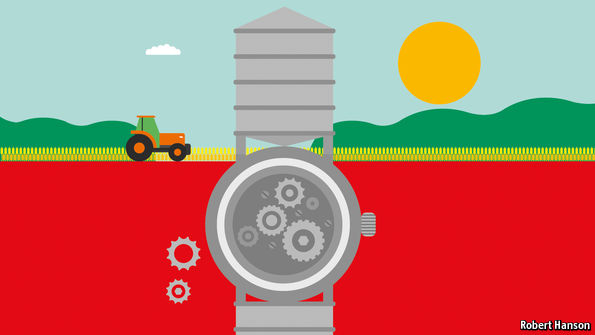
The Economist explains economics
The relationship between trade and wages
This week “The Economist explains” is given over to economics. For
each of six days until Saturday this blog will publish a short explainer
on a seminal idea.
The Economist | 4 Sept. 2016
DOES trade hurt wages? Or, more precisely, do imports from low-wage
economies hurt workers in high-wage ones? Many people assume so.
Economists take a bit more convincing. Back in the 1930s, one trade
economist, Gottfried Haberler, argued that “the working class as a whole
has nothing to fear from international trade”—at least in the long run.
This confidence rested on three observations. Labour, unlike many
other productive resources, is required in all sectors. It will thus
remain in demand however much globalisation shakes up a country’s
industrial mix. Over time, labour is also versatile. Workers can move
and retrain; new entrants can gravitate towards sunrise sectors rather
than industries in decline. Finally, workers are also consumers, who
often buy the foreign goods in local shops. Even if competition from
cheap imports drives down their (nominal) wages, they will come out
ahead if prices fall by even more. Haberler’s confidence was not
universally shared, however. Wolfgang Stolper, a Harvard economist,
suspected that competition from labour-abundant countries might hurt
workers elsewhere. In 1941, he teamed up with Paul Samuelson, his
Harvard colleague, to prove it.
Their Stolper-Samuelson theorem
concluded that removing a tariff on labour-intensive goods would depress
wages by more than prices, hurting workers as a class, even if the
economy as a whole gained. The theorem’s logic rests on the interaction
between industries with different degrees of labour-intensity. It is
perhaps best explained with an example. Suppose a high-wage economy were
divided into two industries: wheat-growing (which is land-intensive)
and watchmaking, which makes heavy use of labour and shelters behind a
10% tariff. If this protection were removed, watch prices would fall by
10%. That would force the industry to contract, laying off labour and
vacating land. That in turn would put downward pressure on wages and
rents. In response, wheat growers would expand, taking advantage of the
newly available land and labour. This dance would continue until
watchmaking’s costs had fallen by 10%, allowing the industry to compete
with tariff-free imports.
Trade
liberalisation, in this example, depresses wages by more than prices,
hurting labour in real terms. This gloomy conclusion has proved
remarkably influential. It appears even 75 years later in debates about
the Trans-Pacific Partnership between America and 11 other countries,
many of them low-wage economies. Some economists regret this influence,
arguing that the theorem’s crisp conclusion does not hold outside of the
stylised settings in which it was first conceived. Even the theorem’s
co-author, Paul Samuelson, was ambivalent about the result. “Although
admitting this as a slight theoretical possibility,” he later wrote,
“most economists are still inclined to think that its grain of truth is
outweighed by other, more realistic considerations.”
Previously in this seriesMonday: Akerlof's market for lemons
Coming up
Wednesday: The Nash equilibrium
Thursday: The Keynesian multiplier
Friday: Minsky's financial cycle
Saturday: The Mundell-Fleming trilemma
Wednesday: The Nash equilibrium
Thursday: The Keynesian multiplier
Friday: Minsky's financial cycle
Saturday: The Mundell-Fleming trilemma
Over the past several weeks The Economist has run two-page briefs on six seminal economics ideas. Read the full brief on the Stolper-Samuelson theorem, or click here to download a PDF containing all six of the articles.


No comments:
Post a Comment